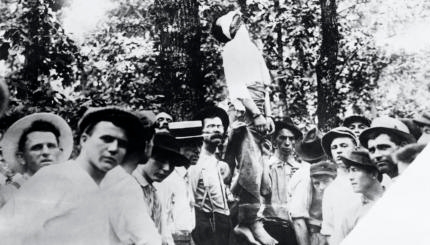Want some insights into a historian’s dilemma? It involves cultural identity. Geography. And NASCAR. (Well – sort of.)
The Encyclopedia of Southern Jewish Communities now contains 250 community histories from 11 different southern states. As we get toward the end of our researching and writing, we are beginning to reach the edges of our territory, where the borders can get a little fuzzy. Covington and Newport, Kentucky, for example, are considered part of the south, but just across the river, Cincinnati, Ohio, is not.
Virginia, which will be completed and online this fall, presents an interesting case. Richmond, with Confederate statues lining Monument Avenue, remains culturally southern, while Alexandria feels little different from the suburb of any northern metropolis. Our encyclopedia history of Alexandria will tell the story of how the southern river port with a small Jewish congregation became enveloped by the expansion of Washington, D.C. after World War II. If one defines the south culturally and historically, rather than simply geographically, then Alexandria was once southern, but is no longer.
The shifting southern-ness of northern Virginia foreshadows the next big dilemma for the encyclopedia: Florida.
Originally, Florida wasn’t even included in the ISJL’s territory. But a few years ago, we took in the Sunshine State as our “12-state region” became the “13-state region.” We don’t serve the entire state, just the panhandle, which is sometimes affectionately called “Lower Alabama.” But after Virginia goes live in the near future, Florida is the last frontier for the encyclopedia. How much of Florida is southern, and which communities should we include in our encyclopedia?
When I give lectures about southern Jewish history, I usually cite recent population statistics, but I always exclude Florida. The main reason for this is that the explosion of the Jewish population of south Florida, fueled by retirees and northern transplants over the last several decades, has little to do with the history of Jews in the South. South Florida’s Jewish community has far more connections and cultural similarities with the Jewish community of New York than with Pensacola, Florida, let alone Greenville, Mississippi. The columnist Leonard Pitts, writing from Miami, once declared that south Florida was the only part of America where you have to go north to get to the South.
Also, far more Jews reside in south Florida than live in the entire South. When the last national Jewish population study included Florida as the South in its regional breakdown, we learned nothing about southern Jewish life, only south Florida Jewish life.
Once, when I was speaking to a group in Sarasota, I was nervous about so easily excluding Florida from the South. So I decided to ask my audience whether they consider themselves to be southerners. Only two people amongst a hundred or so raised their hands: one woman originally from Waco, Texas and a man from Georgia. The rest of the audience, all residents of Florida, had no identity as southerners. While this impromptu poll made me feel a little better about excluding Florida from my population figures, the problem of Florida and how we define the South has always gnawed at me.
Now it’s time to face this issue head on. Will I have to visit Key West and Miami Beach on my next research trip? Was
Seinfeld
’s portrayal of the Florida retirement community “Del Boca Vista” a humorous portrait of southern Jewish life? Were Morty and Helen Seinfeld southern Jews? I haven’t figured out the answers to these questions just yet, and would love to read your opinions on the subject. In the meantime, I am working on a theory about drawing the South’s border somewhere between Daytona Beach, home of the Daytona 500, and Orlando, home of Disney world. After all, the Walt Disney Company, run from a nice Jewish boy from New York seems Yankee – and what’s more southern than NASCAR?
Do you think of Florida when you think of “the South”? Why or why not?


